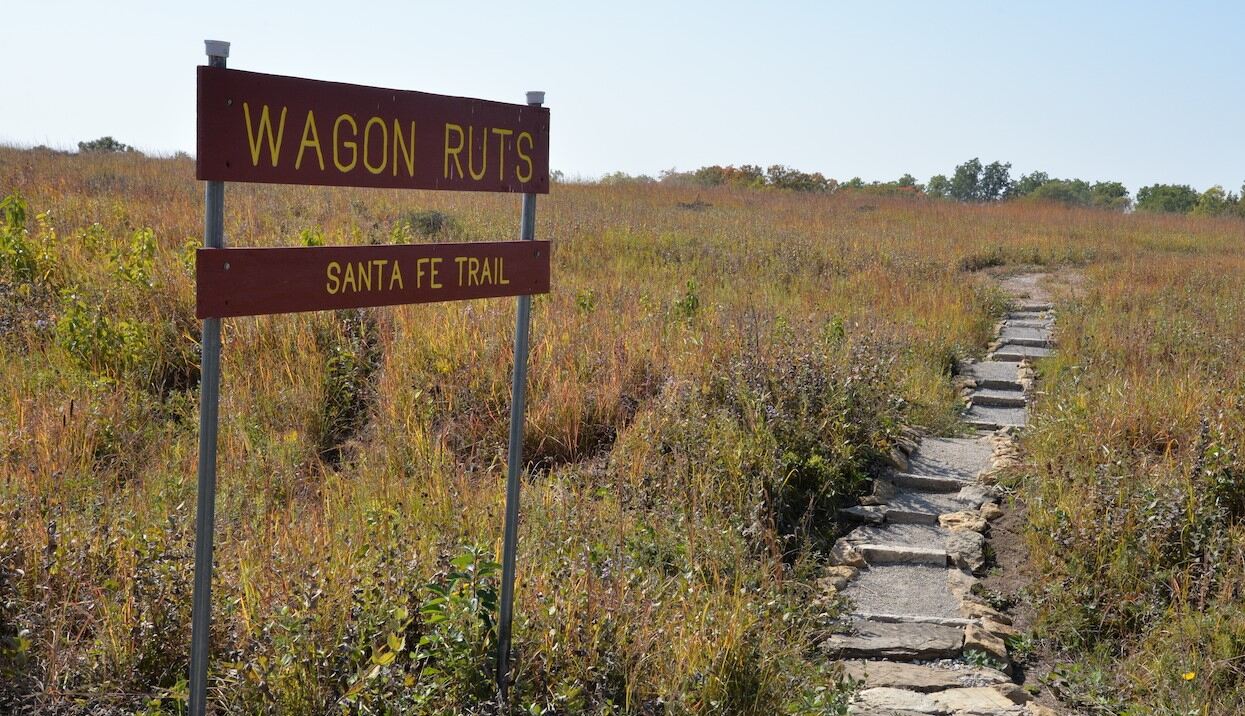
The Echoes of a Nation: Unraveling America’s Enduring Legends
America, a land of boundless horizons and a history forged in the crucible of diverse cultures, is not merely defined by its geographical expanse or its documented past. It is, perhaps more profoundly, shaped by the whispers and shouts of its legends – the stories passed down through generations, across campfires and hearths, along dusty trails and bustling city streets. These narratives, often blurring the lines between fact and fiction, are the very soul of the nation, reflecting its hopes, fears, and the enduring spirit of its people. From our unique vantage point at Santa Fe Trail Stories, we understand that these legends are not static relics of the past; they are living testaments, continually reinterpreted, serving as vital threads in the vibrant tapestry of American identity.
For us, the act of storytelling is akin to tracing the very paths of pioneers and traders, of Indigenous peoples and homesteaders. Each legend, each myth, carries the echoes of journeys – physical and spiritual – much like the ruts left by wagons on the Santa Fe Trail. They tell us not just what happened, but how a nation came to understand itself, to grapple with the unknown, and to celebrate the extraordinary in the everyday.
The First Voices: Indigenous Roots of American Lore

Long before European ships touched these shores, the North American continent hummed with a rich symphony of Indigenous legends. These were the first narratives, woven into the very fabric of the land, explaining creation, the cycles of nature, and the intricate relationships between humans, animals, and the spirit world. For the Navajo, the Diné Bahane’ (Navajo Creation Story) chronicles the emergence through various worlds, guided by figures like First Man and First Woman, embodying a profound connection to the landscape and cosmic order. The Lakota’s White Buffalo Calf Woman brought the sacred pipe and taught them rituals of prayer and peace, a story that continues to resonate deeply today.
These tales are not mere fables; they are epistemologies, moral codes, and historical records, passed down orally for millennia. Trickster figures like Coyote (prominent in many Southwestern tribes, including those along the Santa Fe Trail’s reach) and Raven embody both wisdom and folly, teaching lessons about human nature and the consequences of actions. As we at Santa Fe Trail Stories explore the confluence of cultures along the historic trail, we are reminded that these Indigenous stories represent the foundational layer of American legend, a deep wellspring of wisdom that continues to flow, influencing and enriching all subsequent narratives. They are the initial blueprints of the American spirit, emphasizing respect for the land and the interconnectedness of all life.
Crossing the Ocean: European Encounters and Colonial Fears
The arrival of European settlers introduced a new layer of storytelling, a blend of Old World superstitions and New World anxieties. The vast, untamed wilderness of the Americas sparked both awe and terror, giving rise to tales of spectral figures, malevolent spirits, and encounters with the unknown. The headless horseman of Sleepy Hollow, immortalized by Washington Irving, is a quintessential example of this colonial lore – a Hessian soldier, decapitated by a cannonball, doomed to ride in search of his lost head, embodying the lingering specter of war and the mysterious dangers of the American frontier.
The infamous Salem Witch Trials of 1692-93, though a dark chapter in history, highlight the very real fears and superstitions that fueled early American legend-making. The fear of the devil, of witchcraft, and of the unknown forces lurking in the forests manifested in accusations and tragic injustices. These stories, though rooted in historical events, quickly morphed into cautionary tales and enduring legends about the fragility of community and the perils of mass hysteria. For Santa Fe Trail Stories, these narratives remind us that fear, too, is a powerful catalyst for legend, shaping how communities confront the inexplicable and impose order on a chaotic world.
Westward Bound: Frontier Giants and Outlaw Anthems
As the young nation pushed westward, driven by manifest destiny and the promise of new lands, the legends grew proportionally larger, reflecting the challenges and aspirations of a people conquering a continent. The arduous journeys along trails like the Santa Fe Trail, fraught with danger, isolation, and the sheer force of nature, demanded heroes – or at least, stories that could make sense of the struggle.
This era gave birth to the quintessential American folk heroes: figures of prodigious strength and unwavering determination. Paul Bunyan, the colossal lumberjack whose axe carved out rivers and whose blue ox, Babe, created the Great Lakes, personifies the industrial might and boundless optimism of a nation shaping its landscape. John Henry, the "steel-driving man" who out-raced a steam drill with his hammer, embodies the dignity of labor and the human spirit’s defiance against technological advancement. Pecos Bill, the cowboy who rode a cyclone and tamed the wildest frontier, is the ultimate mythic cowboy, a testament to the grit and larger-than-life characters needed to survive and thrive in the Wild West.

But the frontier also produced its anti-heroes, figures whose legends blur the lines between villainy and folk heroism. Outlaws like Jesse James and Billy the Kid, operating in the shadow of westward expansion, became subjects of countless ballads and dime novels. Their stories, often romanticized, reflected a societal tension between law and lawlessness, freedom and constraint. Were they ruthless killers or champions of the common man against oppressive forces? The legends vary, demonstrating how a nation grapples with its own moral ambiguities. For us at Santa Fe Trail Stories, these narratives are particularly poignant. The Santa Fe Trail itself was a conduit for such tales, carried by traders, soldiers, and settlers, evolving with each telling, becoming part of the shared consciousness of the frontier. The very act of traveling the trail was a legend in the making, each journey a new chapter in the grand American narrative.
The Ethereal and the Cryptic: America’s Monsters and Mysteries
Beyond the human heroes and villains, American legends delve into the supernatural, the unexplained, and the genuinely terrifying. The vastness of the continent, with its unexplored forests, mountains, and swamps, became fertile ground for cryptids and spectral entities. Bigfoot, the elusive ape-like creature said to roam the Pacific Northwest, is perhaps the most famous, a modern-day wilderness myth that taps into our primal fear of the unknown and our yearning for discovery. Sightings persist, fueling documentaries, books, and countless campfire tales.
The Mothman, a winged creature with glowing red eyes sighted in West Virginia in the 1960s, is another chilling example, often linked to prophecies of disaster. The Jersey Devil, a winged, hoofed creature said to inhabit the Pine Barrens of New Jersey, has terrified locals for centuries, a creature born of local folklore and colonial superstition. These legends speak to a persistent human need to personify the mysterious, to give form to the anxieties that lurk at the edges of our understanding. They are not merely scary stories; they are cultural touchstones, reflecting regional identities and collective fears. We at Santa Fe Trail Stories recognize that these tales, too, are a form of exploration, a way of mapping the psychological and emotional landscapes of America.
Ghost stories, too, abound, tied to specific historical sites and tragic events. From the haunted plantations of the South to the spectral battlefields of Gettysburg, from the Winchester Mystery House’s endlessly expanding rooms to the chilling tales of Alcatraz, America is a land populated by restless spirits. These legends serve as haunting reminders of past injustices, unresolved conflicts, and the enduring human desire for closure.
The Living Legacy: Modern Legends and the Power of Storytelling
The tapestry of American legends is not complete; it is continuously being woven. In the modern era, urban legends, internet memes, and conspiracy theories serve a similar function to the old folktales – they explain the inexplicable, warn of dangers, and reflect contemporary anxieties. From tales of alligators in sewers to the enduring myth of the "cursed" video game, these modern legends demonstrate the timeless human need for narrative, for stories that resonate with our shared experiences and fears.
The power of American legends lies not in their factual accuracy, but in their capacity to embody collective memory, to transmit cultural values, and to provide a sense of shared identity. They teach us about resilience, courage, the struggle against adversity, and the enduring mystery of existence. They are a powerful reminder that history is not just a collection of dates and names, but a living, breathing narrative, constantly being retold and reinterpreted.
For us at Santa Fe Trail Stories, the enduring appeal of these legends is profoundly clear. Just as the Santa Fe Trail carved a path through the wilderness, connecting disparate communities and cultures, these legends forge connections between generations, between regions, and between the tangible and the ethereal. They are the invisible trails that crisscross the American psyche, inviting us to explore, to question, and most importantly, to keep telling the stories. They are the echoes of a nation, whispering of who we were, who we are, and who we might yet become. And as long as there are people to listen and voices to speak, the legends of America will continue their vibrant, vital journey.


